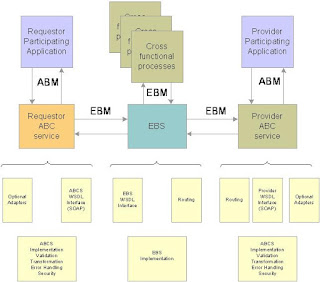GL
AND AP
GL_CODE_COMBINATIONS
AP_INVOICES_ALL
code_combination_id
= acct_pay_code_combination_id
GL_CODE_COMBINATIONS
AP_INVOICES_DISTRIBUTIONS_ALL
code_combination_id
= dist_code_combination_id
GL_SETS_OF_BOOKS
AP_INVOICES_ALL
set_of_books_id =
set_of_books_id
GL AND AR
GL_CODE_COMBINATIONS
RA_CUST_TRX_LINE__GL_DIST_ALL
code_combination_id
= code_combination_id
GL_CODE_COMBINATIONS
MTL_SYSTEM_ITEMS_B
code_combination_id
= cost_of_sales_account
GL AND PO
GL_CODE_COMBINATIONS
PO_DISTRIBUTIONS_ALL
code_combination_id
= code_combination_id
PO_DISTRIBUTIONS_ALL
AP_INVO ICE_DISTRIBUTIONS_ALL
Po_distribution_id
= po_distribution_id
PO_VENDORS
AP_INVOICES_ALL
vendor_id =
vendor_id
PO_HEADERS_ALL
RCV_TRANSACTIONS
Po_header_id =
po_header_id
PO_DISTRIBUTIONS_ALL
RCV_TRANSACTIONS
Po_distribution_id
= po_distribution_id
SHIPMENTS AND AP
INVOICE
RCV_TRANSACTIONS
AP_INVOICE_DISTRIBUTIONS_ALL
RCV_TRANSACTION_ID
= RCV_TRANSACTION_ID
PO_REQUISITION_LINES_ALL
MTL_SYSTEM_ITEMS_B
item_id =
inventory_item_id
org_id =
organization_id
PO_HEADERS_ALL
HR_EMPLOYEES
Agent_id =
employee_id
PO_DISTRIBUTIONS_ALL
PO_REQ_DISTRIBUTIONS_ALL
req_distribution_id
= distribution_id
SHIPMENTS AND INV
RCV_TRANSACTIONS
MTL_SYSTEM_ITEMS_B
Organization_id
= organization_id
INV AND HRMS
MTL_SYSTEM_ITEMS_B
HR_EMPLOYEES
buyer_id
= employee_id
OE_ORDER_HEADERS_ALL
RA_CUSTOMER_TRX_LINES_ALL
TO_CHAR (
Order_number) =
interface_line_attribute1
OE_ORDER_LINES_ALL
RA_CUSTOMER_TRX_LINES_ALL
TO_CHAR (Line_id)
= interface_line_attribute6
OE_ORDER_LINES_ALL
RA_CUSTOMER_TRX_LINES_ALL
reference_customer_trx_line_id
= customer_trx_line_id
OE_ORDER_HEADERS_ALL
WSH_DELIVARY_DETAILS
HEADER_ID
= SOURCE_HEADER_ID
OE_ORDER_HEADERS_ALL
WSH_DELIVARY_DETAILS
AP AND AR (BANKS)
AR_CASH _RECEIPTS_ALL
AP_BANK_ACCOUNTS
REMITTANCE_BANK_ACCOUNT_ID
= ABA.BANK_ACCOUNT_ID
AP AND AR
HZ_PARTIES
AP_INVOICES_ALL
PARTY_ID
= PARTY_ID
OE_ORDER_LINES_ALL
CSI_ITEM_INSTANCES(Install Base)
















